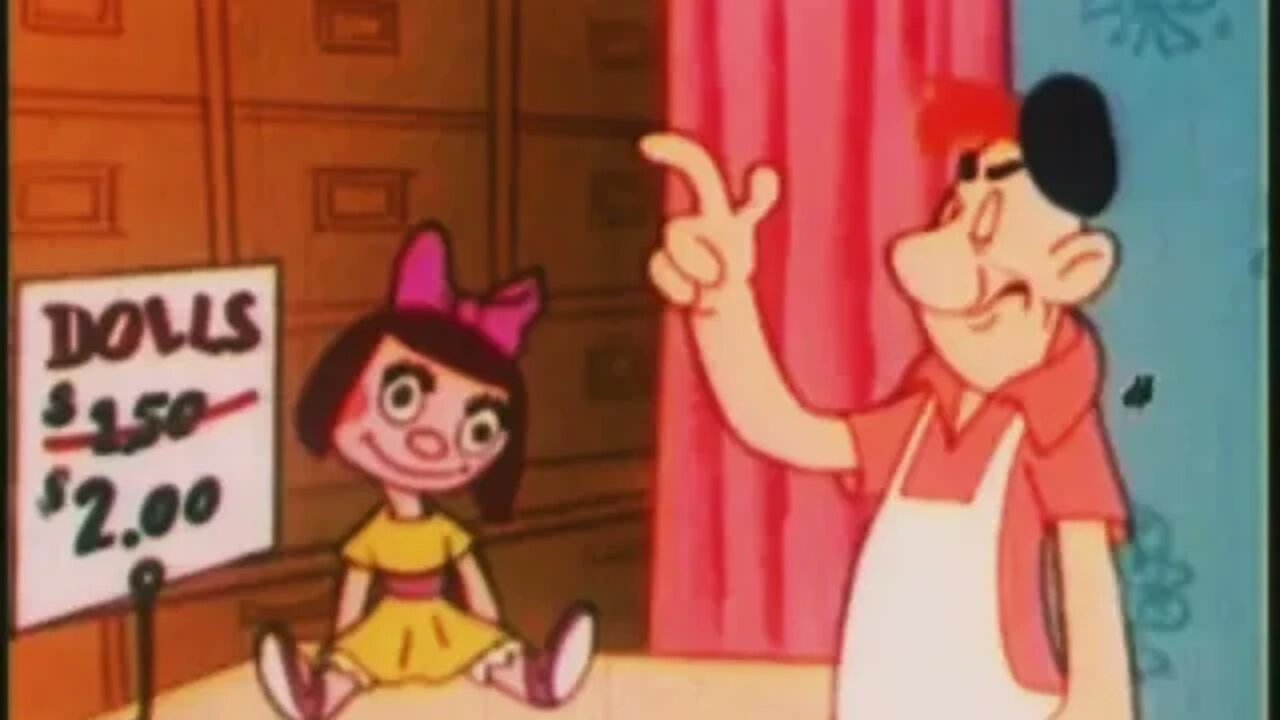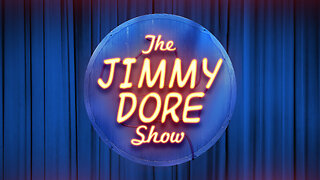Premium Only Content

How to Play America’s Game | Grizly Adams
Why Play Leap Frog?
by Sutherland (John) Productions, Inc.
Publication date 1949
Usage Public DomainCreative Commons Licensepublicdomain
Topics Economics, Cold War, Animation: Advertising
Digitizing sponsor Harding College
Cold War-era cartoon aimed at convincing workers that increased productivity brings about greater purchasing power.
Shotlist
WHY PLAY LEAPFROG?, the fourth in a series of economics films, shows through an animated Technicolor cartoon how increased wages based on increased productivity bring about increased purchasing power.
The film begins with a brief introductory sequence showing two cartoon figures -- one representing prices and the other representing wages -- playing leapfrog as each successively rises on the cost-of-living index. It then shifts to show Joe, a worker in the Dilly Doll Company, slightly down in the mouth because of a steady rise in the cost of living without an accompanying increase in wages. His joy over an increase in wages fades when he discovers that the price of a doll which he planned to buy for his little girl for a birthday present has also gone up. The manager of the store explains to Joe that he has had to increase the price because the factory is charging more.
As Joe is reflecting upon the thought that the raw materials for the doll which markets for two dollars cost only ten cents, a voice asks him whether or not he knows the value of the raw materials in a $1900 car. When Joe guesses $300, the voice tells him that the materials are worth only $22. An animated pictogram shows the raw materials in an automobile and the countless number of men needed to transform it into the finished product. A circle graph shows the proportionate costs involved in the manufacturing and marketing of the car. The direct and indirect labor costs are shown to be $1200.
Joe admits that he can understand this cost analysis for an automobile but still wonders what factors account for beef steak's costing one dollar per pound. The direct and indirect labor costs of feeding, fencing, housing, caring for, shipping, butchering and marketing "Bully Boy" are shown. As a butcher sells a pound of beef, his scales register each of these costs. In the case of this item, as in the case of the car, 85% of the selling price is attributable to direct and indirect labor costs.
The offstage voice helps Joe arrive at the conclusion that increased productivity would result in greater buying power and lower costs. Joe presents to his supervisor the idea of painting four dolls at once. The supervisor thinks it is a good idea and is shown going to the bank to borrow money to purchase new equipment. The increase in production results in another increase in Joe's wages and a decrease in the price of dolls. The summarizing statement points out that under this arrangement wages can keep ahead of prices. [Educational Screen Jan. 52]
Ken Smith sez: The third sharp-looking cartoon in the "fun and facts about American business" series, beautifully animated by John Sutherland Productions. "Joe" (see MEET KING JOE) works at the Dilly-Doll factory as a face painter, and is upset because nearly every one of his raises is offset by an increase in the cost of goods. But the narrator explains that labor costs are to blame (not excessive profits or executive bonuses) and Joe quickly learns to use the system to his own benefit. A Freedoms Foundation award-winner. In Technicolor.
Charts Graphs Animation Labor costs Workers Economics Money Cold War Anti-communism Capitalism Economic education
-
 LIVE
LIVE
The Jimmy Dore Show
1 hour agoPelosi Shivs AOC In Leadership Vote! Poll: 40% Of Young People SUPPORT CEO Murder! w/Leonarda Jonie
8,922 watching -
 LIVE
LIVE
WeAreChange
1 hour agoElon Musk & Donald Trump: The Emergency Halt That Saved Us
2,339 watching -
 LIVE
LIVE
Melonie Mac
2 hours agoGo Boom Live Ep 32! Soul Reaver Remastered!
520 watching -
 1:01:03
1:01:03
LFA TV
22 hours agoTHE LATEST SPENDING BILL IS AN ABOMINATION! | UNGOVERNED 12.18.24 5pm EST
7.51K6 -
 1:43:34
1:43:34
Redacted News
3 hours agoBREAKING! WARMONGERS PUSHING TRUMP TO LAUNCH PRE-EMPTIVE WAR WITH IRAN | Redacted News
82.8K152 -
 1:00:26
1:00:26
Candace Show Podcast
3 hours agoPiers Morgan x Candace Owens | Candace Ep 123
40.9K132 -
 2:06:51
2:06:51
Darkhorse Podcast
6 hours agoThe 256th Evolutionary Lens with Bret Weinstein and Heather Heying
41.2K24 -
 3:08:08
3:08:08
Scammer Payback
3 hours agoCalling Scammer Live
22K -
 1:21:25
1:21:25
Mally_Mouse
6 hours agoLet's Yap About It - LIVE!
69.2K9 -
 5:35
5:35
Cooking with Gruel
23 hours agoMaking Fresh Salted Caramel
56.3K7